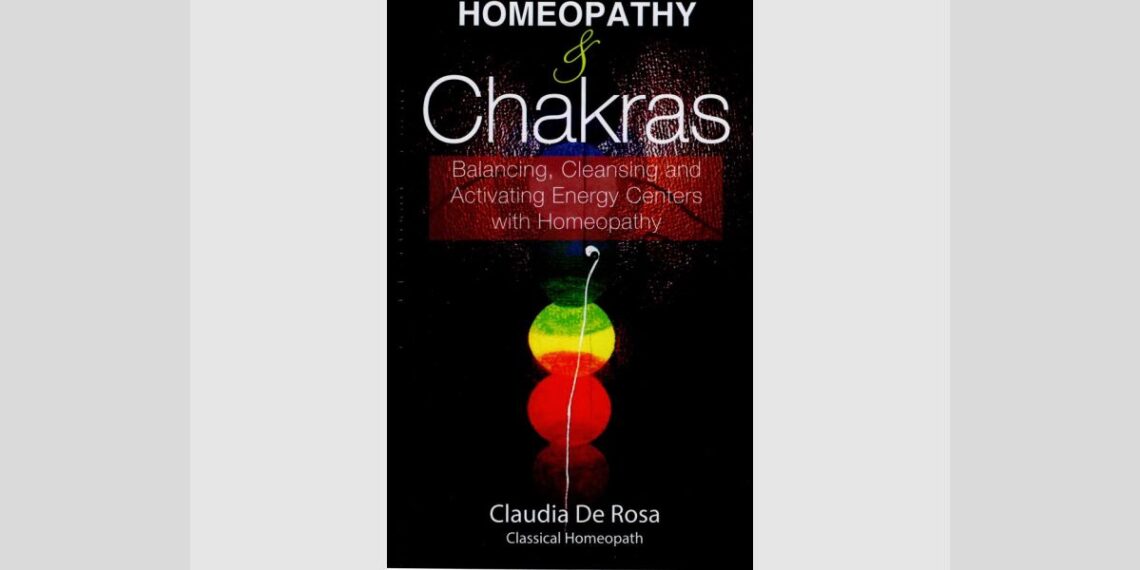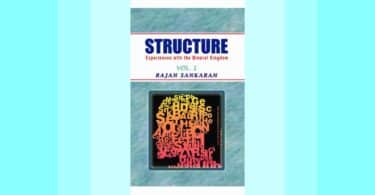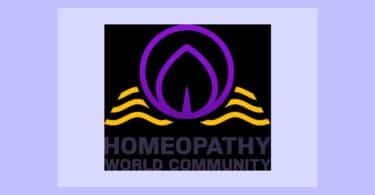Homeopathy and Chakras: Balancing, Cleansing and Activating Energy Centers with Homeopathy – by Claudia De Rosa
B. Jain Publishers Ltd. -2011
ISBN : 97881311918296
228 pages
$20.66
Reviewed by David Johnson
In the introductory chapter to her book “Homeopathy and Chakras”, classical homeopath Claudia De Rosa describes how, during her initial exposure to homeopathy, she was struck by the fact there was very little energy theory, compared to systems such as Ayurvedic and Chinese medicine. She points out how the five-element theory and chakra system of understanding energy is a very broad, cross-cultural model in the oldest systems of medicine. De Rosa’s intention in writing the book was to allow these ancient energetic paradigms to inform homeopathy, and in so doing help homeopaths to recognize deeper patterns in clients’ symptomatology and their choice of corresponding remedies.
De Rosa poses the central question to be answered by her book: ‘So what can knowing the (energy) model do for homeopathy?’ Her answer: ‘As well as explaining how homeopathy works, a conscious knowledge of the model makes remedy selection easier and can even open up new avenues of treatment. It can make learning remedies easier as once you understand the energetic essence of a remedy, most of its symptoms become predictable and make sense.’
For some homeopaths this may seem to be drifting into a “new” arena, away from classical practice, and for others it may simply represent a natural evolution. While it seems obvious that homeopathy can inform other therapeutic systems, it also makes sense that other modalities can do the same for homeopathy. In this regard one is reminded of Heilkunst, the term used by Hahnemann to describe the art of making people healthy and whole, on all levels. Based on natural law, Heilkunst is an art that transcends mechanical or technical skills, and homeopathy is one facet of that art. In other words, Hahnemann recognized the importance of adjunctive therapies to optimize health and remove obstacles to cure, even as one uses homeopathic remedies.
De Rosa addresses the point when she states ‘. . . as a profession, we are still unable to step beyond the constraints of tradition to embrace the new tools that have the potential to increase our knowledge and hone our skill as healers . . . It begs the question: are we in the profession of healing or are we in the business of upholding tradition in spite of the changing nature of diseases, environments, and consciousness? . . . In any case what is really important here is the patient’s health.’
Homeopathy and Chakras opens with the introduction “What is Energy?”, and after exploring this question, the next chapters provide a broad overview of chakra theory and the vital force. For those new to this modality, the term chakra refers to centers within the energetic body reflecting one’s orientation to worlds “without and within”. Whereas homeopaths generally learn about imbalances of the vital force through the client’s expressed symptoms, the chakra system offers another perspective as to how and why the person is feeling what they’re feeling.
Following the relatively in-depth discussion of the seven main chakras and examples of how they function in balanced and imbalanced states, De Rosa provides an overview of homeopathy as vibrational medicine, and reviews the common miasmatic theories used in homeopathic practice. She then returns to the subject of chakras as she correlates them with the endocrine system, colors, and color healing. Following a discussion of a dysfunctional chakra system, she provides a helpful example of how she used chakra theory in concert with homeopathic treatment in her practice.
She states: ‘I believe the best way to integrate the chakra system in homeopathic treatment is to work individually with the patient during consultation to cleanse and balance the dis-eased chakra center. . . The best way to do that is to guide the patient during consultation with specific exercises so that he or she will be able to do them at home, according to their time and space.’
Accordingly, the last chapters of the book discuss ways to cleanse and activate one’s chakra energy system, as well as diagnosis and treatment of problems in the energy field. She reminds the reader of the important principle “Healer, heal thyself”, and finally she outlines different exercises in grounding one’s energy, and opening and closing the chakra and psychic energy centers.
De Rosa also directs her attention to what is required of us personally, beyond technical skills, in order to continue growing in our knowledge and capacity as homeopaths. She points out ‘It is essential first to take on the responsibility of understanding and healing ourselves and then we are able to heal others. . .’ Expanding upon Hahnemann’s admonition to be unprejudiced observers, De Rosa describes this requisite of practice as being ‘centered, aligned, stabilized, and grounded in our (own) core energy being . . . it requires the self-confidence, courage, inspiration, consciousness, compassion, and self-empowerment that such integrated groundedness affords. This comes with openness, receptivity, loving intent, and practice.’
Another point which is often overlooked, at least early on in one’s practice (!), is what is required of the client, and De Rosa also addresses this: ‘When the client has a unified will toward becoming well, being healed, and coming into physical, emotional and psychic health, then the process has less friction and becomes one of mutual cooperation and education. Then she states ‘A valuable skill is to always work in the present, knowing absolutely that it is the healer’s ability to stay present that brings forth the insight and healing energy that allows the healer to be effective and as such the healing is always mutual and transpersonal.’
De Rosa states early on how the implications for combining energetic theory and practice and homeopathy are actually ‘vast, too vast to fully explore here’. This is true, and she leaves it to the reader to begin their own active exploration of the connections between these systems. But for starters, one can easily equate Lycopodium’s challenges with impotence, assertion of will and gastrointestinal problems, with the second and third chakras (genital and sexuality; solar plexus and power), Ignatia’s grief with the fourth and fifth (heart and love; throat and expression); and Hydrogen’s conflict between earthly and other-worldly existence with the seventh (crown of head and universal consciousness).
In conclusion, Homeopathy and Chakras: Balancing, Cleansing and Activating Energy Centers With Homeopathy is the first book to combine an in-depth exploration of chakras and energetic theory, homeopathic practice, and what is required of both practitioners and clients for effective healing. Quoting Edgar Cayce, De Rosa reminds us that ‘healing of the physical without the change in the mental and spiritual aspects brings little real help to the individual in the end’. In essence, this book asks the reader to create their own final chapter as energetic chakra theory is incorporated into their homeopathic practice. A practitioner’s own unique gifts provide the doorway to integrating these modalities, such that they might realize ever-deepening levels of perception and healing.






i agree completely. even W H O have concluded that- to gain good health- any treatment should aim at physical well-being, mental well-being, envirnomental well-being, spiritual well-being.
chakra healing also very important to achieve it.
i am a holistic natural health care practioner, i apply homoeopathy, bio-minerals, flower therapy and herbal therapy and also reiki therapy. i am a reiki master, gives importance to chakra healing and aura healing along with natural medicines.
since 20 yrs i have never taken any anti-biotic or powerful drugs for any level of my health problem. i strongly believe that there is natural remedy for every health problem.
tthe above article is good discussion
venkatesh
Excellent Article and thought process. This goes a long way toward healing others!!!
right article at the right time..chakra cleansing and such activates the spiritual adaptability to our homeo medicines which purely works on the vital plane.such articles are most advantageous. jegadeesh
I wish I had a copy of Claudia’s book. It sounds like a really interesting debate.
There are ‘all sorts’ of snippets of information about chakras and so on, floating about. Some of this material is fascinating, but in reality it is a deeply hidden subject that needs to be unfolded systematically.
There is one leading expert authority in this field who really does know what he is talking about, and is able to teach such a systematic approach. I would like to wholeheartedly recommend Dr. Vasant Lad.
He wrote two wonderful books, simply called, ” Textbook of Ayurveda, Vol I and Vol II”. If we took these two texts as our standard reference we could make much progress in this area.
Please tell me sir by homeopathy the 7 chakras can activate